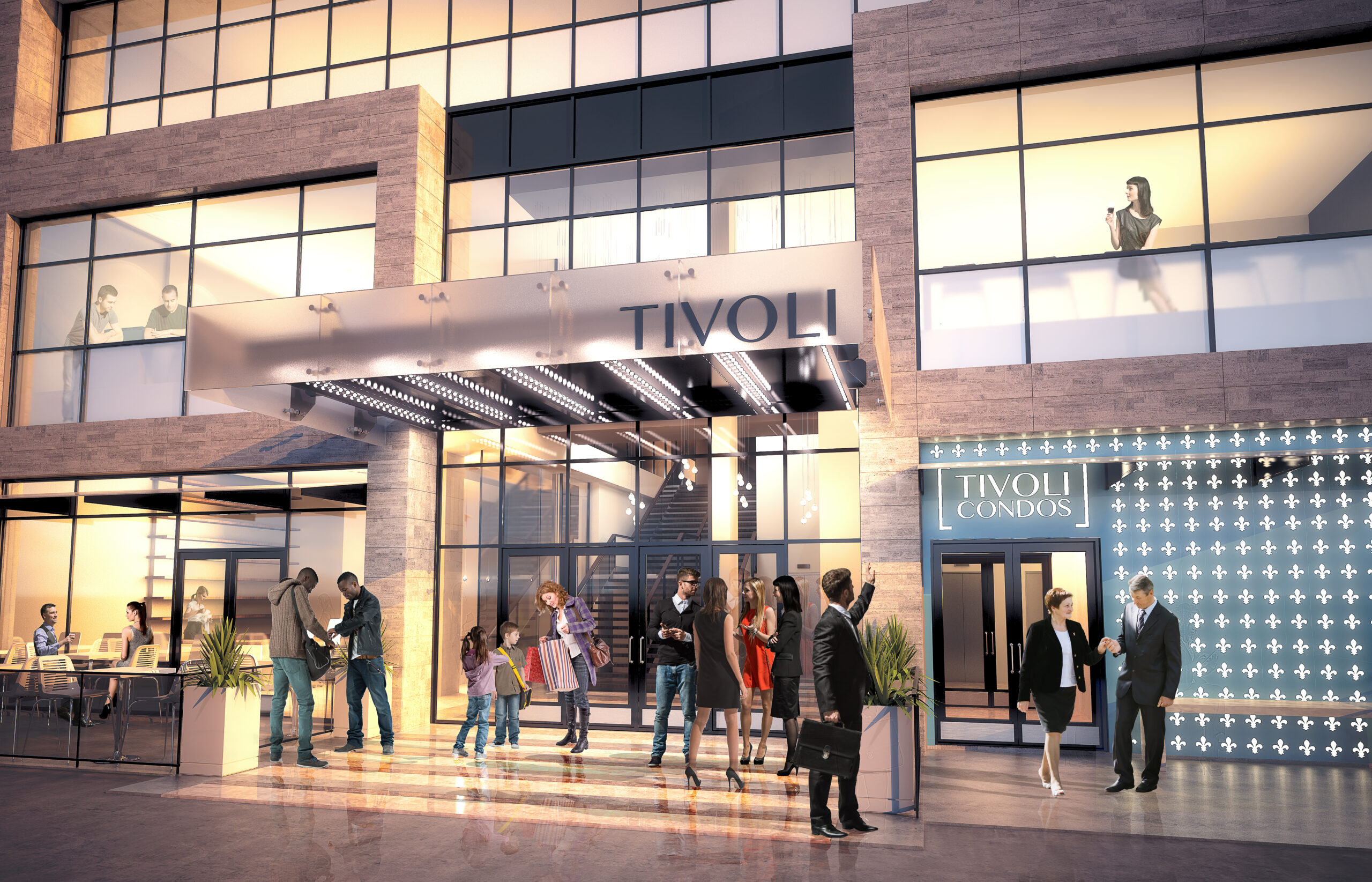We see the Tivoli Theatre redevelopment as a catalyst for urban renewal that has all the ingredients to be a landmark building in Downtown Hamilton. mcCallumSather’s Tivoli Theatre Condominium proposed design will not only leverage its historical value for prospective stakeholders, but will also contribute to the downtown regeneration through the addition of a diverse arts program, and increased density to the Art District on James Street North.
Over the years, the Tivoli has responded to, as well as perpetuated the changes that have taken place along James Street North. This site began as a carriage factory in 1875, later becoming a vaudeville theatre in 1908. In 1924, the auditorium was enlarged to showcase a greater variety of performances, until in the 1980s when the site was converted to a retail, music and local theatre venue.
It is a distinct and dynamic historical asset, and because of this unique character, the property is currently being considered as part of a larger development. Beyond the restoration that will take place within the auditorium itself, the development is designed to increase commercial activity, contribute to the cultural life on James Street and bring intensification to the downtown core.
As is the case with many historic buildings, the previous owners were not equipped to respond to the unique and challenging conditions of a heritage building. As a result of insufficient maintenance and investment over the years, the carriage factory portion along James Street suffered structural damage and was demolished in 2004.
In 2012, mcCallumSather began work with Diamante Investments, developing a plan to preserve, conserve and restore the theatre while incorporating its unique character within the larger development. This approach ensures the theatre will be maintained in the present as well as connecting it to a sound business and management plan which can be secured well into the future.
Heritage Process:
Heritage projects are unique in that they involve specialized processes used to determine the appropriate response to an existing condition and future considerations, using tools such as Heritage Impact Assessments, Public Meetings and a Conservation Plans.
Step 1: Heritage Impact Assessment
The Heritage Impact Assessment involved a review of the existing conditions, the proposed development, development alternatives and mitigation strategies. This work was completed as a joint effort with Quinn Dressel (Structural), GSP (Planning) and Janis Barlow (Theatre Consultant). Each contributed to the proposed development that was studied for feasibility and response to heritage. The outcome of this report outlined a process to document, stabilize, conserve, and adapt the existing building into the final project.
Step 2: Public Meetings / Conservation Plan (Short Term Measures)
mcCallumSather and Banko Media compiled the historic documentation of the remaining theatre including photography and measured drawings.
mcCallumSather presented the Heritage Impact Assessment and proposed conservation measures to the Heritage Permit Review Subcommittee (September 27th). The goal was to obtain a demolition permit to remove the lobby portion of the theatre, while salvaging a portion of the existing coffered ceiling.
Step 3: Heritage Permits / Conservation Plan (Mid-Term Measures)
Phase 1: Demolition and Salvage of Lobby
We will oversee the demolition of the lobby including all exterior walls, roof, foundations and stairs. The coffered ceiling, the only designated portion of the lobby, will be partially salvaged (2 x 2 ft. cells) and/or be cast in a mold for re-use within the new connective gallery of the proposed condominium. Both temporary and permanent hoarding for environmental protection and security will be provided. Plywood sheathing may be used for interior hoarding to protect existing statues in alcoves while exterior structural-insulated panels may be used to enclose exterior openings, creating refuge from the elements.
Phase 2: Occupancy of Auditorium
We will oversee the upgrades to the auditorium pertaining to health and safety requirements of the code which include roof repairs, provision of storm and sanitary lines, provision of washrooms, provision of HVAC and electrical as well as the removal of mold/toxins.
Phase 3: Connection to Mixed Use Development
We will oversee the connection to the podium tower proposed on James Street. This will involve partial demolition of interior walls at the balcony (non-designated components of the building) and of the exterior wall on the west to connect to the new building. This phase will enable improved accessibility and a higher occupancy with the provision of elevators, a grand staircase and supportive program such as a washrooms, crush space, multipurpose room (to workshop performances), ticket sales, office, and coat check in the condominium proper.
Phase 4: Restoration, Maintenance and Monitoring Post Occupancy
The Long Term component of the Conservation Plan will outline the requirements post occupancy for monitoring and maintenance needs over its lifetime.







